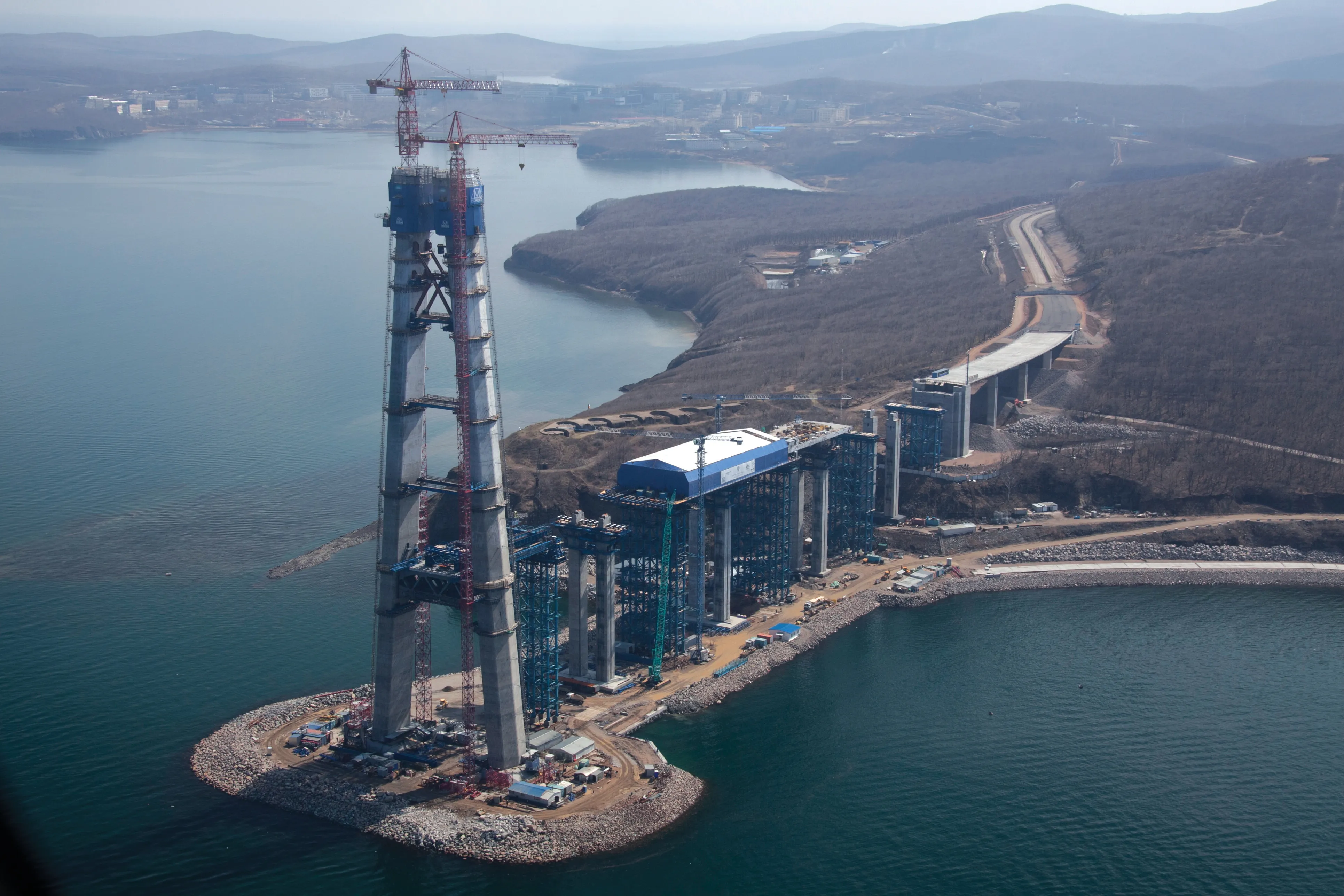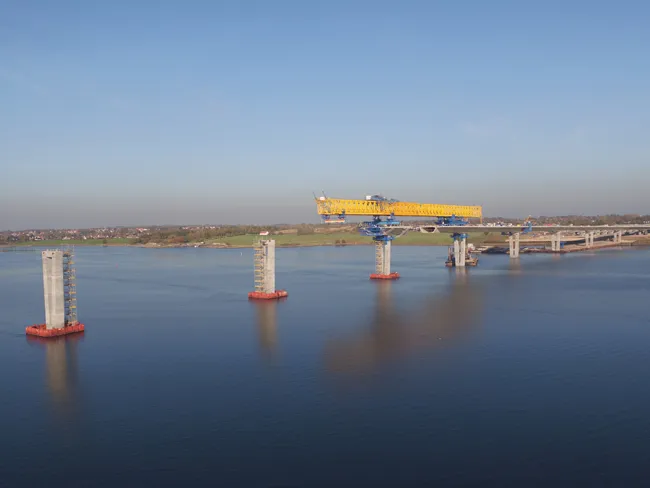
Harsco Infrastructure has provided self-climbing formwork (SCF), which is helping ensure quick and safe access during the construction of a 320m tall pylon for the world’s longest cable-stayed bridge.
With its 1,100m central span the 3,100m Russky Island Bridge will ultimately be the world’s longest and tallest cable-stayed bridge. Traversing the Eastern Bosphorus, the US$490 million bridge will link the far east port of Vladivostok with Russky Island, which belongs to the Russian city.Russian building contractor, SK MOST, is aiming for a record-breaking construction period
of just 43 months so that the bridge’s four-lane road is open in time for the
The
SPECIFICATION
Russky Island Bridge
•Bridge deck width (steel structure): 21m
•Headroom under bridge: 70m
•Bridge length: 1,885.53m
•Total bridge length: 3,100m
•Largest span: 1,104m
•Height of bridge pylons: 320.9m
•Budget: €360 millionDuring the technical planning phase Harsco’s SCF team used its expertise to accelerate the construction schedule and ensure maximum safety, particularly for the two climbing units used on the pylon. This eliminated the need for any time-consuming conversion work and resulted in a formwork and platform solution that is said to be perfectly adapted to the tapering and inclined geometry of the pylon itself.
At the base, this calls for a ground plan of 7.8 x 13m with a 2m wall thickness, tapering to 7.1 x 7m with a 0.7m wall thickness at the top. The in-depth planning means that only a single work platform has to be removed from the SCF assembly, which is done during a pre-scheduled break in construction work. All other adjustments and climbing can be carried out safely and without holding up the site work unnecessarily.
To accommodate the tight construction schedule the system was specifically designed to allow adjustments to the SCF, and the 72 climbing cycles of 4.5m, to be performed quickly.
Rigid separation between the steelfixing levels and the shuttering and climbing operations means that once the steelfixing is completed, the formwork can be retracted and cleaned before the climbing shoes are fitted and the climbing rails raised and tied for the next pouring cycle. This allows the SCF platforms to be raised immediately after completion of the steelfixing and the formwork to be moved into its new position ready for the next pour. Once pouring is complete, the steelfixing for the next cycle can begin.
To protect men and materials from the severe climate, the self-climbing formwork is fully enclosed, complete with a modular, movable roof.
The exceptionally high load-bearing capacity of Harsco’s SCF brackets (150 kN vertically and 100 kN horizontally) is crucial to this project. The pylon’s special geometry, and continuous tapering, mean that only six of the 22 brackets employed actually climb vertically, with the others climbing at transverse and often changing angles of up to 5% from the vertical. Despite its high load-bearing capacity each SCF bracket requires just a single tie, with installation of the tie cones being a simple task. The cones only need to be positioned at the correct horizontal intervals, and unlike pairs of cones, they do not need to be set at a precisely measured angle.
Harsco is providing a formwork foreman and a number of technicians to support the project and ensure that the meticulously planned work processes are followed on site.








